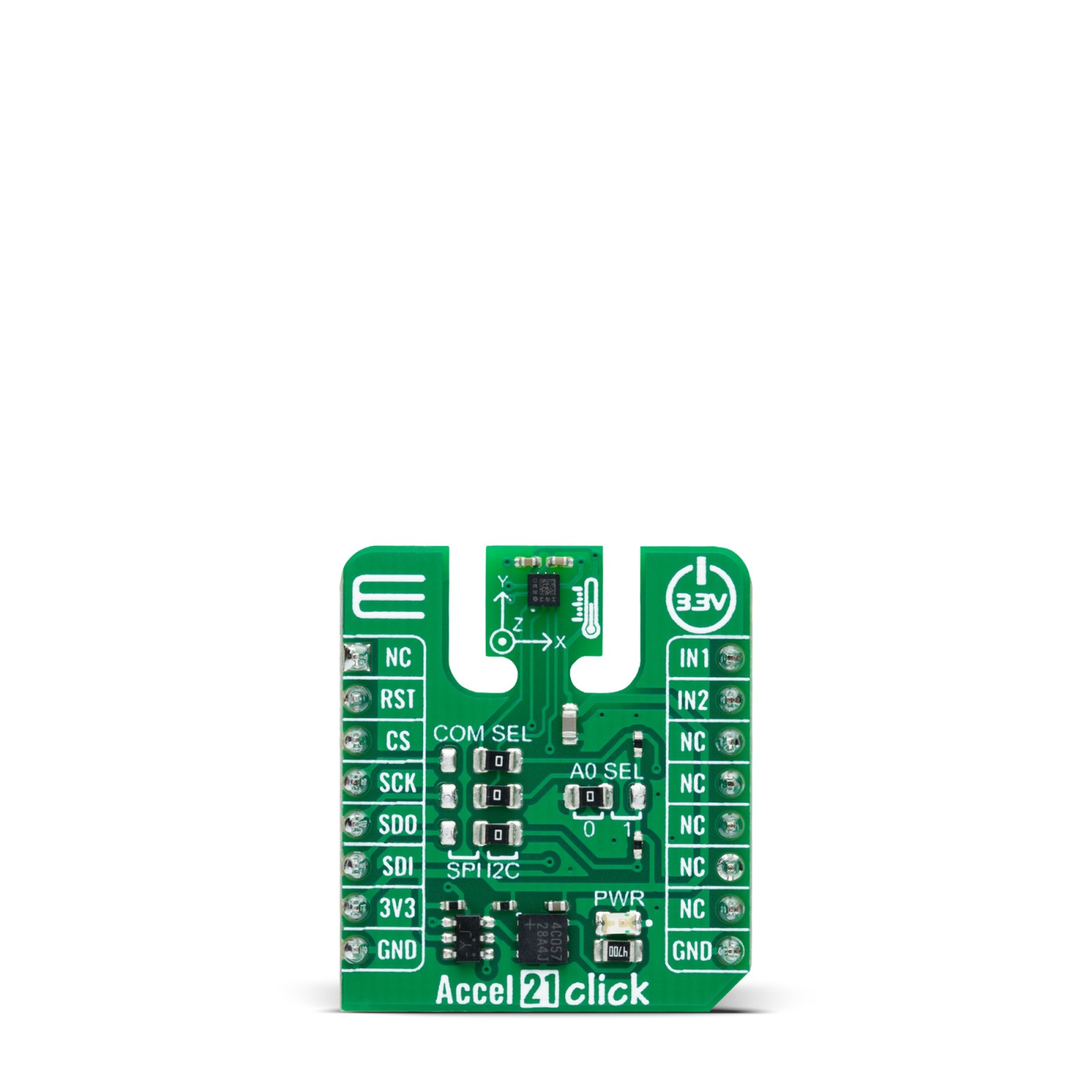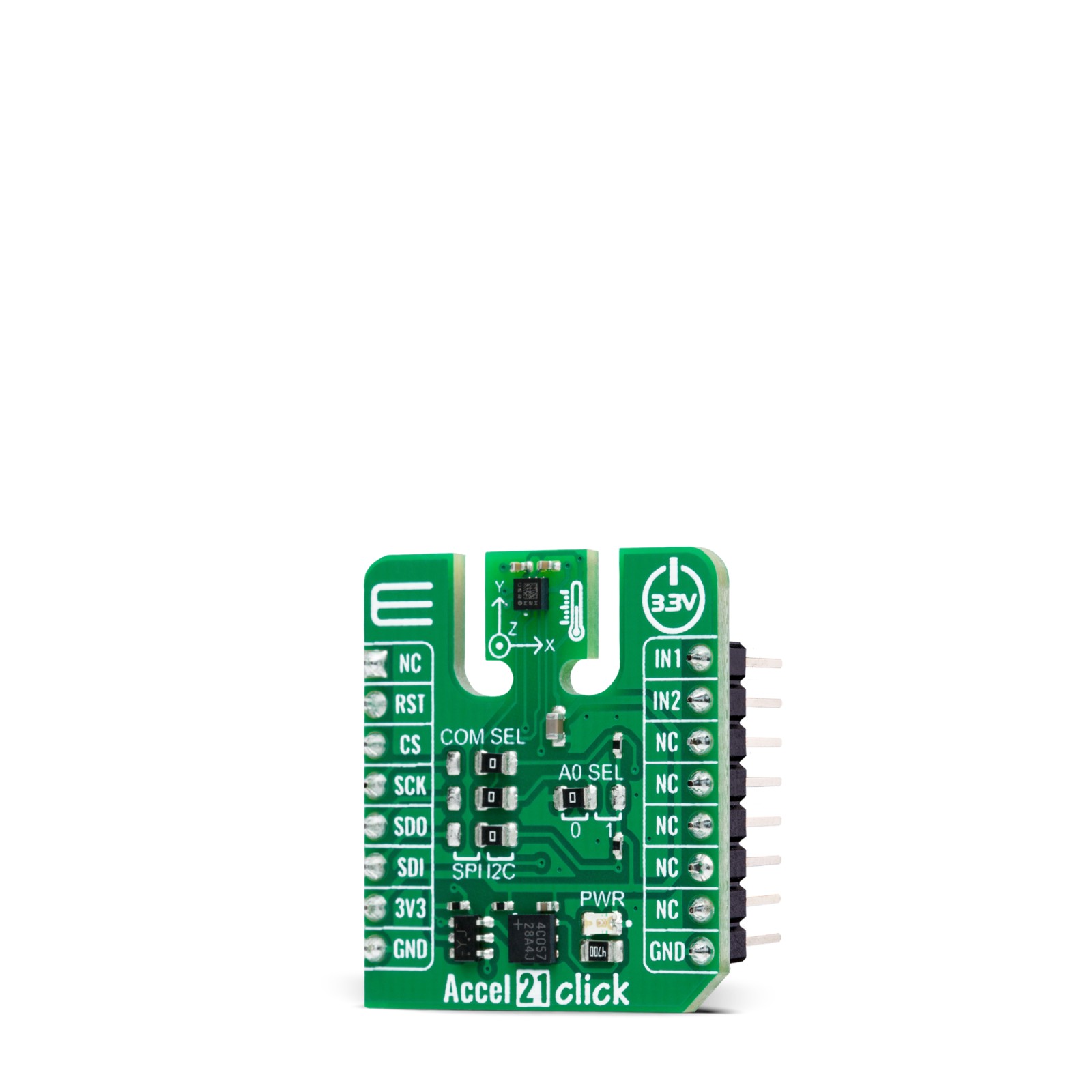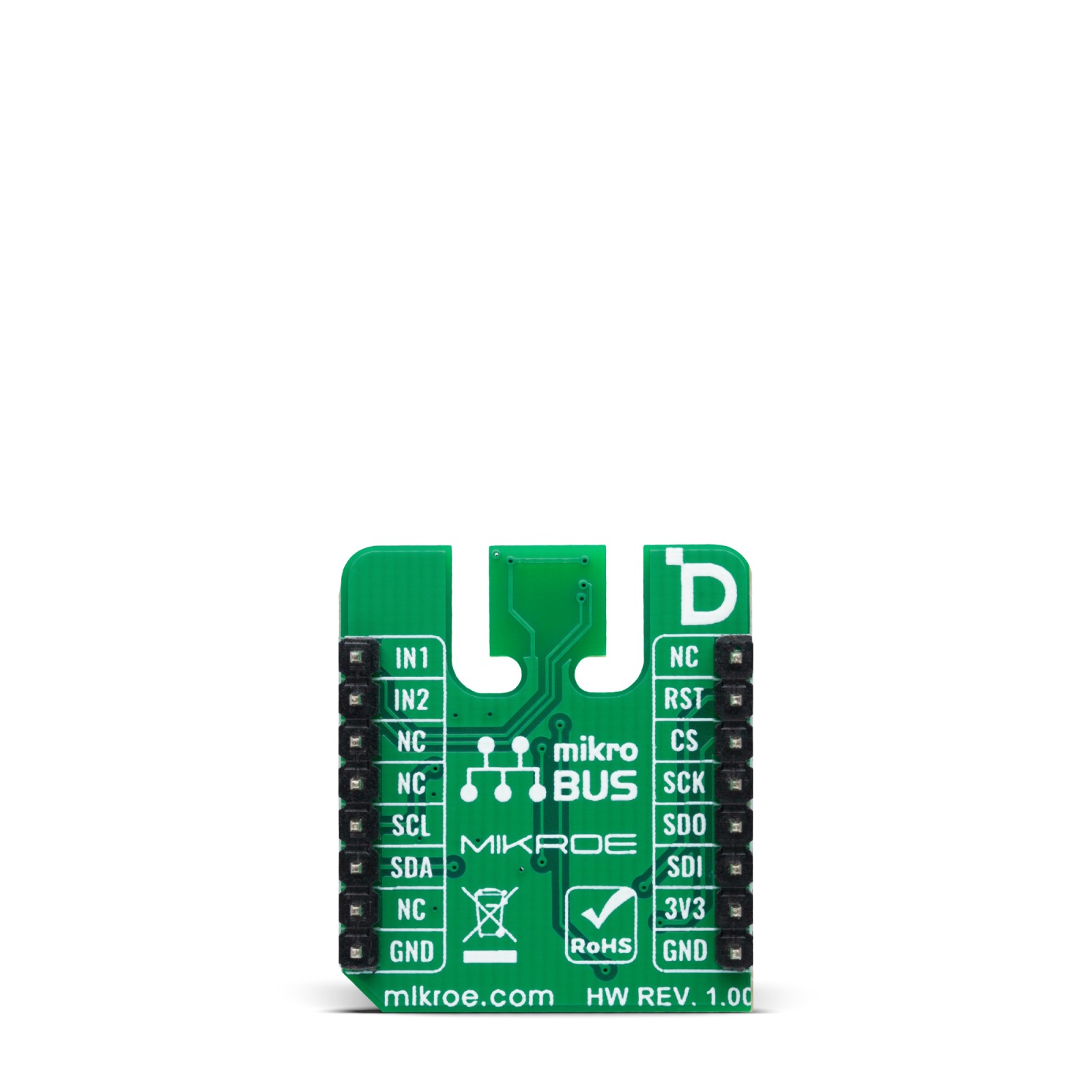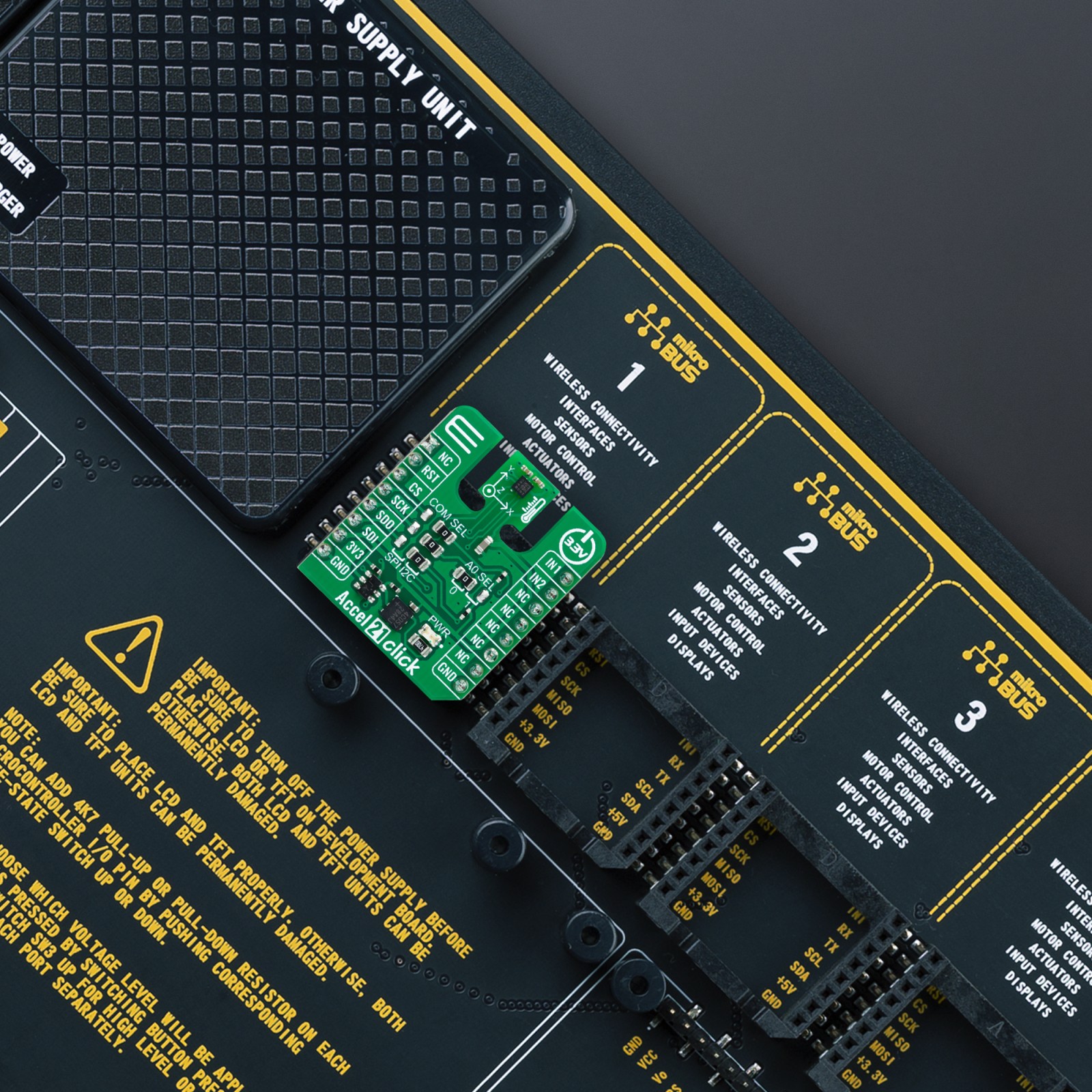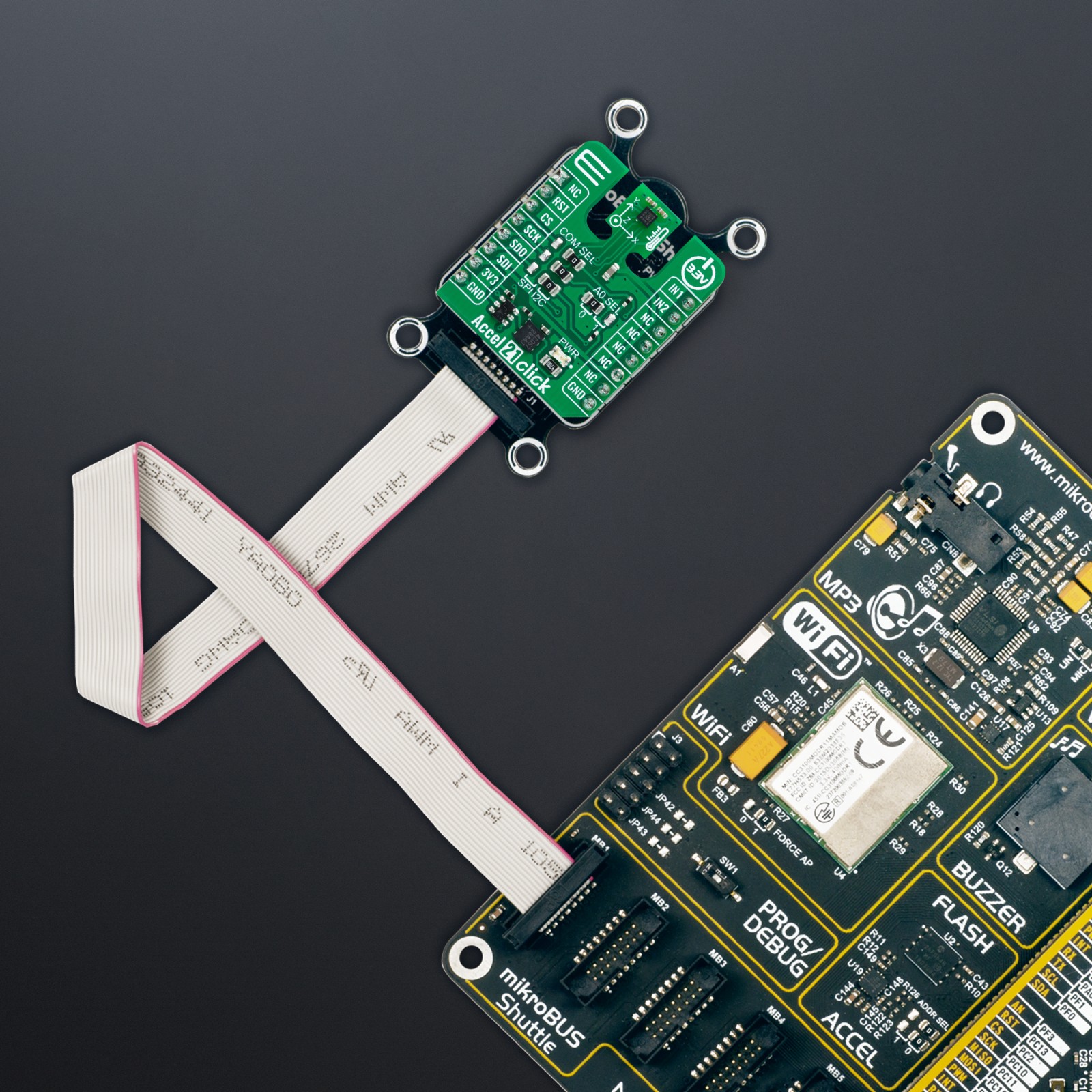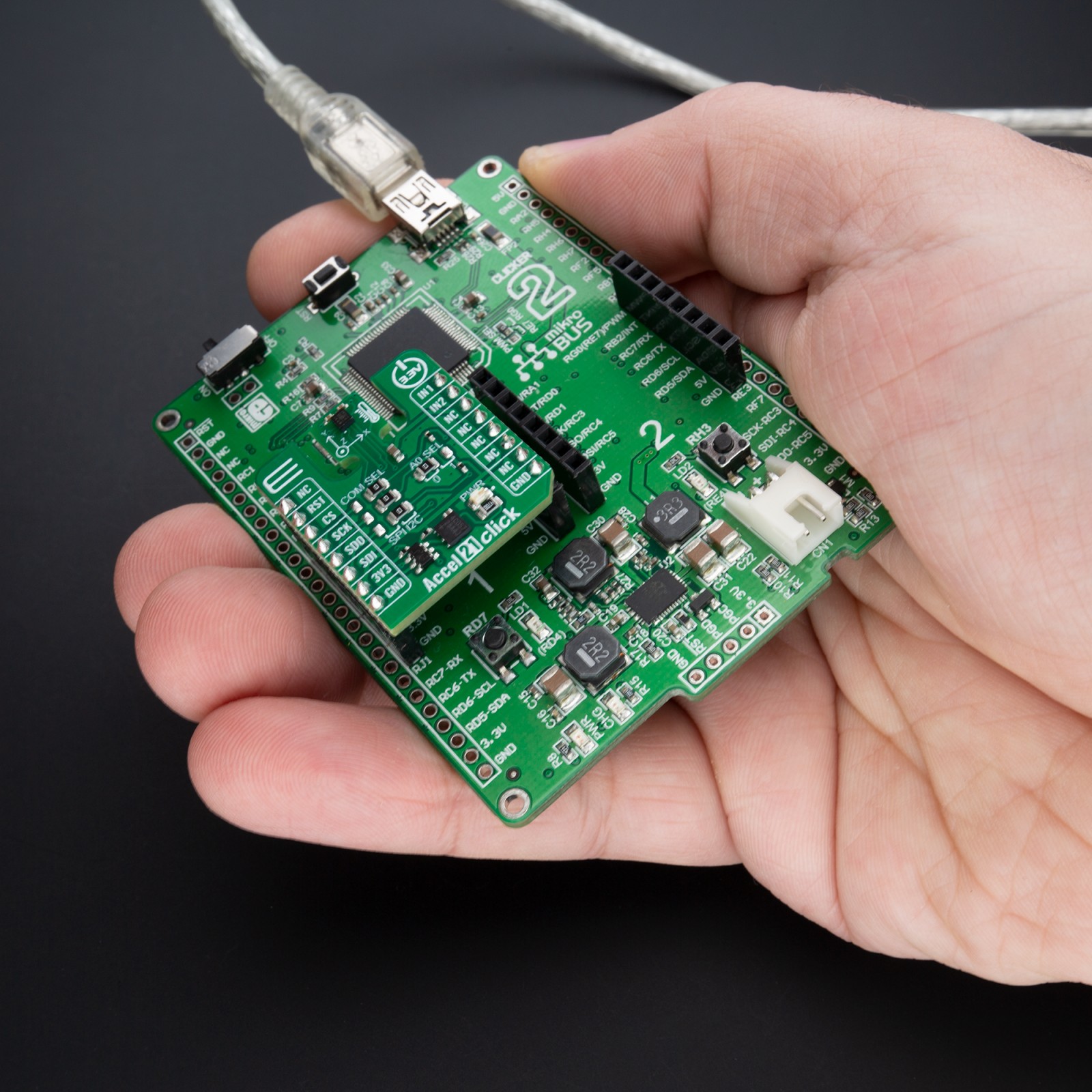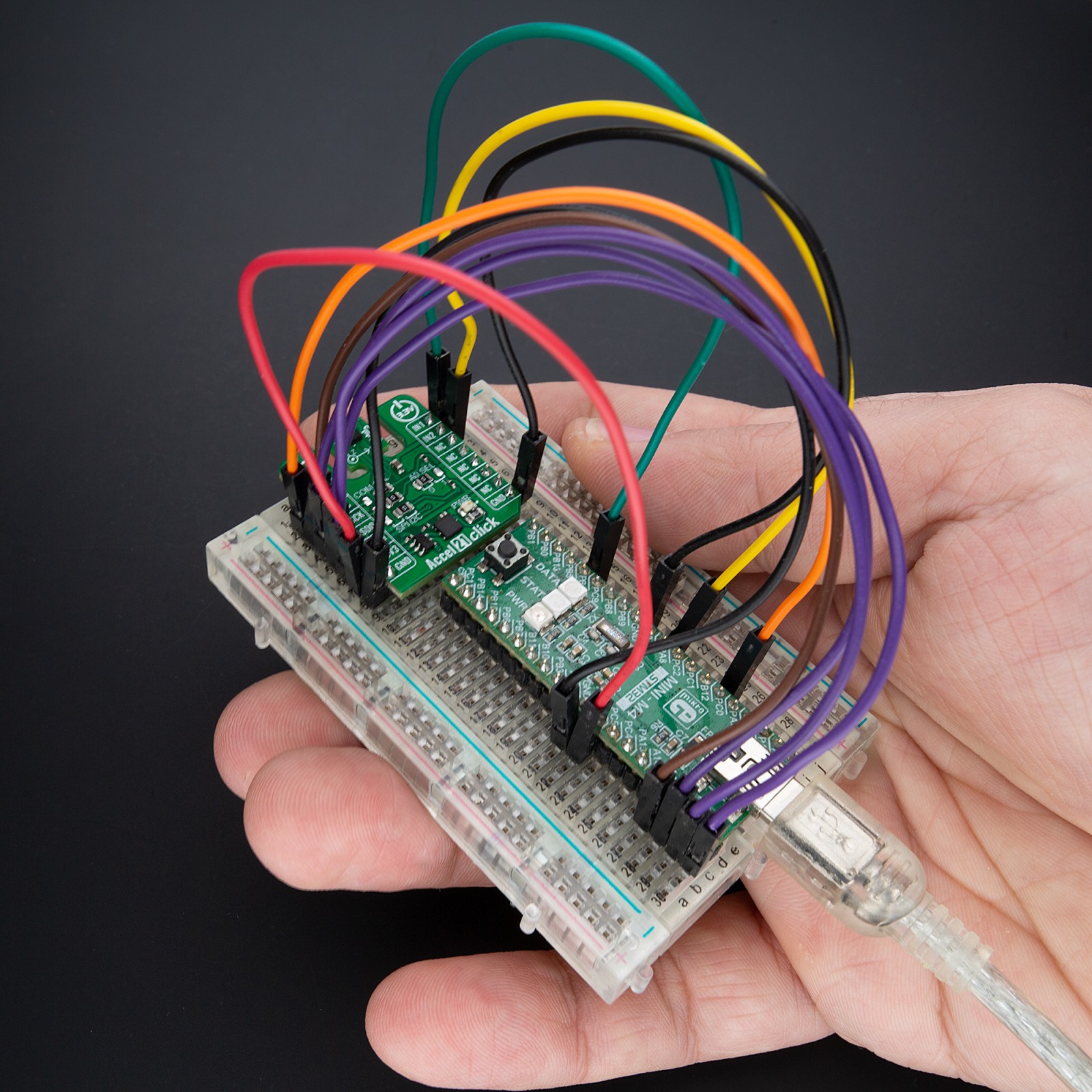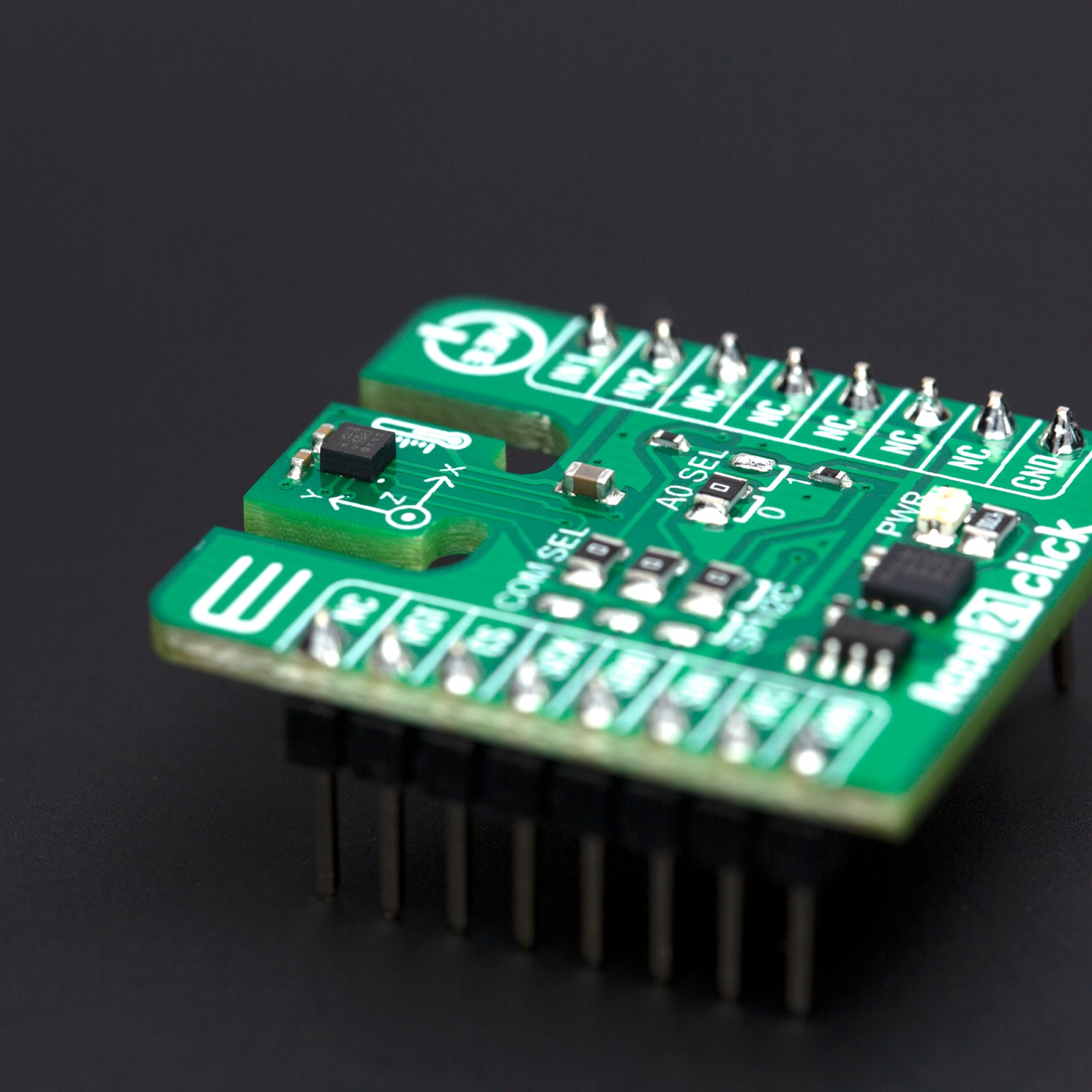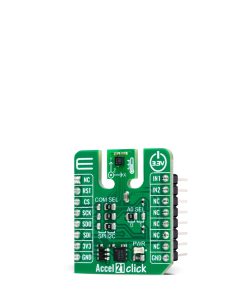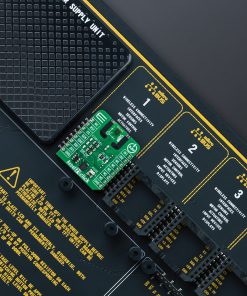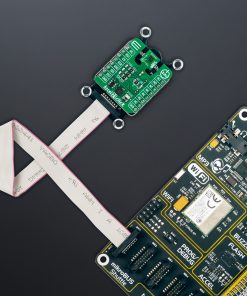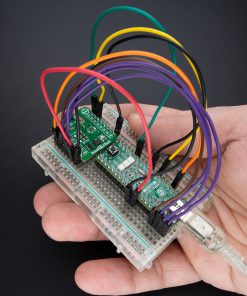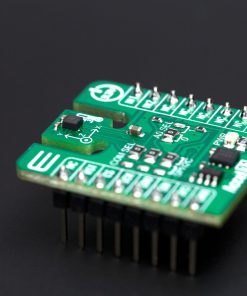Accel 21 Click
R1,150.00 ex. VAT
Accel 21 Click is a compact add-on board that contains an acceleration sensor. This board features the MIS2DH, a high-performance three-axis accelerometer from STMicroelectronics. The MIS2DH allows selectable full-scale acceleration measurements in ranges of ±2g, ±4g, ±8g, or ±16g in three axes with a configurable host interface that supports both SPI and I2C serial communication. It also supports high-resolution and low-power operating modes, allowing maximum flexibility to meet various use case needs. This Click board™ is suitable for multiple applications such as motion-activated functions, posture and free-fall detection, and many more.
Accel 21 Click is fully compatible with the mikroBUS™ socket and can be used on any host system supporting the mikroBUS™ standard. It comes with the mikroSDK open-source libraries, offering unparalleled flexibility for evaluation and customization. What sets this Click board™ apart is the groundbreaking ClickID feature, enabling your host system to seamlessly and automatically detect and identify this add-on board.
Stock: Lead-time applicable.
| 5+ | R1,092.50 |
| 10+ | R1,035.00 |
| 15+ | R977.50 |
| 20+ | R940.70 |

